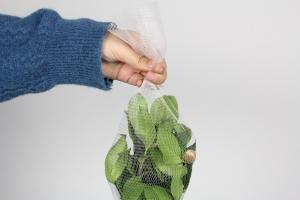Is Water Lettuce an Invasive Plant?
Water lettuce, also known as Pistia stratiotes, is a free-floating aquatic plant that is native to the Amazon Basin in South America. In recent years, water lettuce has been introduced to various parts of the world, including North America, Asia, Africa, and Australia. Due to its ability to reproduce quickly and its lack of natural predators in these new habitats, water lettuce has become a concern as an invasive plant species.
The Characteristics of Water Lettuce
Water lettuce has a rosette of leaves that are light green in color and have a velvety texture. The leaves are oval-shaped and grow to be up to 20 centimeters in length. The plant's roots hang down in the water and can grow up to one meter in length. Water lettuce can reproduce both sexually and asexually, and can double its population in just a few weeks during optimal conditions.
The Negative Impacts of Water Lettuce
Water lettuce has a range of negative impacts on the ecosystems it invades. It forms dense mats on the surface of water bodies that can reduce oxygen levels, prevent light from reaching submerged plants, and interfere with water flow. This can negatively affect the health of fish and other aquatic organisms, and can even cause fish kills. Water lettuce can also clog waterways, making it difficult for boats to navigate and increasing the risk of flooding during heavy rainfall events.
Control Measures for Water Lettuce
There are several methods for controlling water lettuce populations. Mechanical control involves physically removing the plants from the water, either by hand or using machinery. Chemical control involves the use of herbicides to kill the plants. However, this method can also harm other aquatic life and has the potential to contaminate groundwater. Biological control involves introducing natural predators of water lettuce into the ecosystem. In North America, the weevil Neohydronomus affinis has been successfully introduced as a biocontrol agent.
The Importance of Preventing the Spread of Water Lettuce
Preventing the spread of water lettuce is crucial to protect the health of aquatic ecosystems. It is important to avoid introducing water lettuce to new water bodies and to remove any existing populations as soon as they are detected. This can be achieved through measures such as cleaning boats and equipment between water bodies and avoiding dumping aquarium plants or garden waste into waterways.
Conclusion
Water lettuce is an invasive plant species that has the potential to cause significant harm to aquatic ecosystems. Efforts must be made to prevent the spread of water lettuce and control its populations where it already exists. By taking action to protect our waterways from invasive species, we can help to ensure the health and longevity of our aquatic ecosystems and the many species that depend on them.

 how many times do yo...
how many times do yo... how many planted tre...
how many planted tre... how many pine trees ...
how many pine trees ... how many pecan trees...
how many pecan trees... how many plants comp...
how many plants comp... how many plants can ...
how many plants can ... how many plants and ...
how many plants and ... how many pepper plan...
how many pepper plan...






























